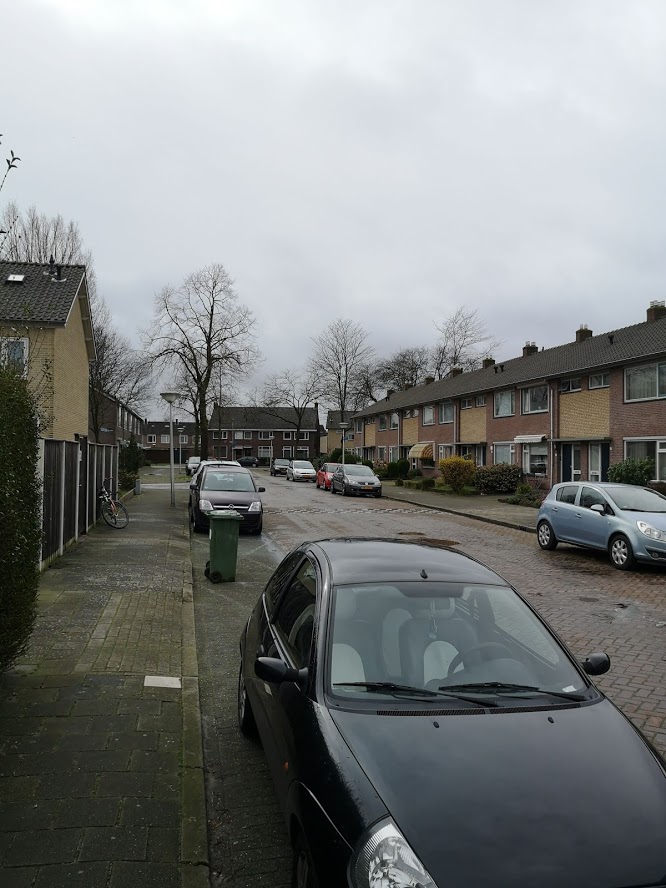Netherlands, Eindhoven
FC-01x Future Cities (Self-Paced) - Exercise 1 : "Making the Invisible - Visible"

Uploaded on 2020-03-11 by XAVIER, Mário
Visible components in the picture: parked cars, a trash bin, a parked bycicle, long trees, houses built with bricks, chimney on the roof and front yards, two sidewalks, a street built with bricks, some water in the street, cloudy sky, pedestrian lighting. All the visible elements together are the image of a urban system with a residential function. Invisible information: 1 - Season (Winter) from analyzing the unleafed trees. 2 - Transportation habits in Eindhoven from the number of parked cars. We need to associate more data to the number of parked cars to obtain information. If the time data is added (morning) we may get the information that people in Eindhoven tend to use public transportation/bycicles to commute to work. But if current data about coronavirus is added (the government guideline that people in Noord-Brabant - where Eindhoven is - should work from home) we may get the information that probably the guideline is being followed. Only a continuous monitoring of the number of parked cars would get us knowledge. City health management is a key point towards livability. The knowledge of parked cars pattern could determine if a public health measure is being followed, and act upon it.